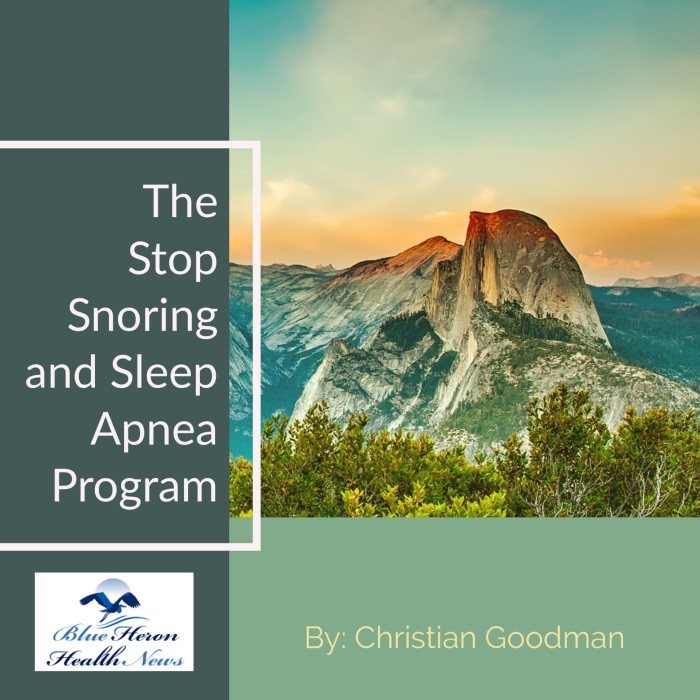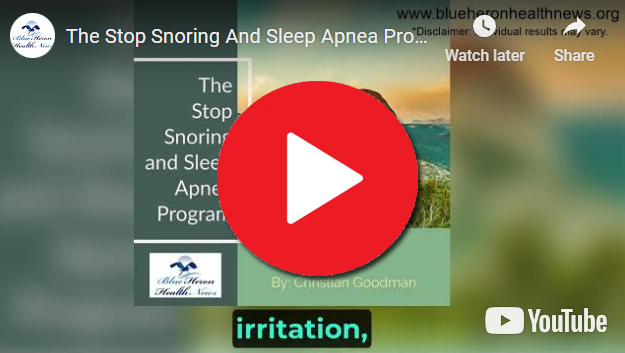
The Stop Snoring And Sleep Apnea Program™ a well-researched program created to help stop snoring and sleep apnea so that you can have a good night sleep. The techniques that you will learn from this program works immediately. It will only take you 3-7 minutes to perform these simple exercises that the author has recommended but the results that you will get will help you have a good night sleep as soon as tonight. Within a week, snoring will be a thing of the past.
What are the treatment options for sleep apnea?
Sleep apnea is a serious sleep disorder characterized by repeated interruptions in breathing during sleep. There are several treatment options available for managing sleep apnea, ranging from lifestyle changes and medical devices to surgical interventions. The appropriate treatment depends on the type and severity of the sleep apnea, as well as the individual patient’s needs and overall health. Here are the main treatment options for sleep apnea:
1. Lifestyle Changes
a. Weight Management:
- Weight Loss: Losing weight can significantly reduce the severity of obstructive sleep apnea (OSA) in overweight individuals by reducing fat deposits around the neck and improving airway patency.
b. Sleep Position:
- Positional Therapy: Sleeping on your side rather than your back can prevent the tongue and soft palate from collapsing into the airway. Special pillows or positional devices can help maintain side sleeping.
c. Avoiding Alcohol and Sedatives:
- Substance Avoidance: Alcohol and sedatives relax the muscles of the throat, increasing the risk of airway collapse. Avoiding these substances before bedtime can help reduce apnea episodes.
d. Smoking Cessation:
- Quit Smoking: Smoking can increase inflammation and fluid retention in the airway, worsening sleep apnea symptoms. Quitting smoking can improve overall respiratory health and reduce sleep apnea severity.
2. Positive Airway Pressure (PAP) Therapy
a. Continuous Positive Airway Pressure (CPAP):
- How it Works: CPAP involves wearing a mask over the nose and/or mouth that delivers a continuous stream of air to keep the airway open during sleep.
- Effectiveness: CPAP is the most common and effective treatment for moderate to severe obstructive sleep apnea.
b. Bi-Level Positive Airway Pressure (BiPAP or BPAP):
- How it Works: BiPAP provides two levels of pressure: a higher pressure during inhalation and a lower pressure during exhalation. It is often used for patients who have difficulty tolerating CPAP or who have central sleep apnea.
- Usage: Particularly useful for patients with more complex respiratory conditions or those who require different pressures for inhalation and exhalation.
c. Auto-Adjusting Positive Airway Pressure (APAP):
- How it Works: APAP automatically adjusts the pressure throughout the night based on the patient’s needs.
- Flexibility: Offers a more comfortable experience by providing variable pressure tailored to the user’s breathing patterns.
3. Oral Appliances
a. Mandibular Advancement Devices (MADs):
- How it Works: These devices fit over the teeth and hold the lower jaw slightly forward, helping to keep the airway open.
- Effectiveness: Useful for mild to moderate obstructive sleep apnea and for individuals who cannot tolerate CPAP.
b. Tongue Retaining Devices:
- How it Works: These devices hold the tongue in a forward position to prevent it from obstructing the airway.
- Usage: An alternative for patients who find MADs uncomfortable.
4. Surgical Options
a. Uvulopalatopharyngoplasty (UPPP):
- Procedure: Removes tissue from the rear of the mouth and the top of the throat, potentially including the uvula and part of the soft palate.
- Effectiveness: Can reduce snoring and sleep apnea symptoms but may not be as effective as CPAP for severe cases.
b. Genioglossus Advancement (GA):
- Procedure: Repositions the muscle attachment of the tongue to prevent it from collapsing into the airway.
- Usage: Often combined with other surgical procedures to enhance effectiveness.
c. Maxillomandibular Advancement (MMA):
- Procedure: Moves the upper and lower jaws forward to enlarge the space behind the tongue and soft palate.
- Effectiveness: One of the most effective surgical treatments for severe sleep apnea.
d. Inspire Therapy (Hypoglossal Nerve Stimulation):
- How it Works: An implantable device stimulates the hypoglossal nerve to move the tongue forward, keeping the airway open during sleep.
- Usage: Suitable for patients with moderate to severe obstructive sleep apnea who cannot tolerate CPAP.
5. Alternative Therapies
a. Positional Therapy:
- Devices: Special pillows, belts, or vibrating devices encourage sleeping in a position that reduces airway obstruction.
b. Myofunctional Therapy:
- Exercises: Involves exercises to strengthen the muscles of the tongue, throat, and mouth, which can help reduce snoring and mild sleep apnea symptoms.
c. Lifestyle Interventions:
- Diet and Exercise: Improving overall health through diet and exercise can indirectly benefit sleep apnea by reducing inflammation and improving respiratory function.
6. Medications
a. Treating Underlying Conditions:
- Congestion Relief: Medications for allergies or nasal congestion can help improve airflow and reduce sleep apnea symptoms.
- Managing Other Conditions: Proper management of conditions like hypothyroidism, heart failure, and others can improve sleep apnea outcomes.
7. Combination Therapies
a. Multi-Modal Approach:
- Integrated Treatment Plans: Combining different treatments such as lifestyle changes, CPAP, and oral appliances may provide the best outcomes for some patients.
- Tailored Therapy: Personalized treatment plans based on the patient’s specific condition and response to various therapies.
Summary
Treatment options for sleep apnea range from lifestyle changes and positive airway pressure therapies to oral appliances, surgical interventions, and alternative therapies. The choice of treatment depends on the severity and type of sleep apnea, the patient’s preferences, and their overall health. A healthcare provider can help determine the most appropriate treatment plan, often involving a combination of approaches to effectively manage and reduce sleep apnea symptoms. Regular follow-ups and adjustments to the treatment plan are essential for ensuring optimal results and improving overall sleep quality.

The Stop Snoring And Sleep Apnea Program™ a well-researched program created to help stop snoring and sleep apnea so that you can have a good night sleep. The techniques that you will learn from this program works immediately. It will only take you 3-7 minutes to perform these simple exercises that the author has recommended but the results that you will get will help you have a good night sleep as soon as tonight. Within a week, snoring will be a thing of the past.